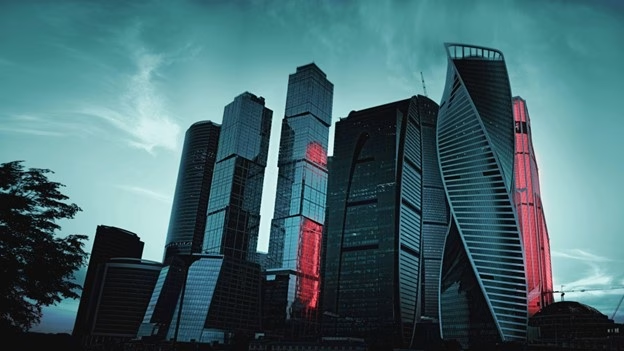If your construction firm relies solely on traditional blueprints and specification binders, you are fighting a modern battle with outdated weapons. The competition for high-value contracts has never been fiercer, and clients—whether they are developers, corporations, or public bodies—demand certainty, not just promises on paper. This is where architectural visualization becomes your game-changer. We’re talking about utilizing high-fidelity 3D rendering services not as an afterthought for marketing, but as the central pillar of your tender submission strategy. This crucial shift moves your proposal from a dry technical specification to a compelling, visually communicated vision. Our goal is to demonstrate how the strategic use of visualization streamlines your most complex plans, fosters immediate client confidence, and directly translates into a significantly higher bid-winning rate. You don’t just win the bid; you become the obvious choice.
Moving Beyond Paper: The Visualization Advantage in Tender Submissions
Let’s be honest about the people reviewing your proposal: the final decision-makers are often financiers, board members, or project managers who are brilliant in their fields, but they aren’t necessarily experts at translating line weights and sectional cuts into a finished structure. They look at a dense pile of documents and immediately feel a sense of uncertainty. This is the point where relying on abstract documentation becomes a liability. Your construction company must offer clarity. High-fidelity 3D visuals provide an immediate, unambiguous understanding of the final product, the quality you promise, and the design intent you plan to execute. This is the strategic value of visual communication—it addresses the client’s emotional need for certainty and sets you decisively apart from rivals still pushing paper.
Simplifying Complexity: Translating Technical Specs into Client Confidence
Do you dread trying to articulate the sheer complexity of a four-phase excavation and foundation pour, or the intricate routing of a central HVAC system? Explaining those things can take pages of technical writing that your client might skip or misunderstand. A superior 3D model, powered by robust data, can communicate those intricate structural, mechanical, or logistical plans in seconds. This isn’t just about pretty pictures; it’s about using 3d architectural visualization rendering to demystify complex construction phases. Utilizing 3d architectural rendering services shows the client you’ve thought through every phase, from site access to final detailing. This deep simplification is the fastest path to building absolute client confidence, proving you don’t just have a nice-looking building design, but a clear, executable plan that is easy for them to champion and approve. This strategic use of 3d rendering architecture makes your bid feel less like a risk and more like a sure thing.
The Power of Precision: Using 3D Models for Material and Quality Proof
A construction contract often hinges on the promise of quality. But how do you prove the quality of the materials and finishes when the project is still months or years away from completion? This is where the fidelity and detail conveyed by high-end rendering become critical. We often see firms make the mistake of showing a generic building shape. The winner, however, uses their submission to prove their commitment to exacting detail and quality finishes. This is where the expertise of an architectural rendering company shines. Their high-fidelity 3D rendering extends the conversation beyond the building’s envelope and delves into the specifics, creating an undeniable visual commitment to the proposed materials and textures.
Showcasing Finishes and Functionality with Photorealism
You want the client to see the exact finish of the reclaimed timber siding or the specific grain pattern on the Italian marble you’ve budgeted for. Photorealistic rendering enables your company, possibly with the assistance of a 3D rendering service, to precisely specify and showcase those exact material selections. Beyond materials, it can simulate real-world environmental conditions—the quality of natural light flooding the atrium at noon, or how the building facade reacts to dusk. This ability to capture lighting, shadows, and seasonal context elevates your proposal from a conceptual to a tangible one. It ensures that expectations regarding aesthetic quality are set accurately from the start, enabling the client to make fully informed decisions and demonstrating your meticulous attention to every facet of the project.
The Strategic Use of Visual Assets: 3D Rendering Services for Winning Bids
A truly successful bid doesn’t just include a single beautiful image; it strategically deploys a full suite of visualization assets to engage the evaluation committee on multiple levels. It’s about moving beyond static images to dynamic content that tells a complete story. This requires careful planning to integrate these high-impact visuals effectively into the tender document itself. Think of your bid as a presentation, and the 3D assets as the slides that captivate and convince.
Integrating Visuals to Maximize Proposal Impact
When you engage specialized architectural 3d rendering services, you gain powerful tools to address every concern a client might have, from design aesthetic to logistical feasibility. Your construction company should strategically package these visual assets to maximize their impact. This includes the use of various visual formats to address different client concerns, which will be consolidated into a single, structured list. This approach ensures that you are providing visual proof points for every key section of the tender. This combination of static and dynamic visuals guarantees that your proposal is not only the clearest but also the most memorable.
- Still Exterior Renderings: To showcase aesthetic integration within the urban or natural context, focusing on curb appeal and neighborhood harmony.
- Interior Walk-Throughs/Flythrough Videos: To provide the client with an immersive experience of the finished space and demonstrate functionality/flow, addressing usability concerns.
- Phased Construction (4D) Animations: To visually demonstrate logistical expertise, site management, and precise timeline execution, mitigating schedule risk.
- Detailed Material Callouts: To highlight key, high-value components or sustainable features with specific realism, justifying the investment in quality.
Beyond Aesthetics: Using Visualization for Risk and Budget Alignment
While the beauty of a render certainly helps sell the dream, the actual winning power of visualization lies in its connection to data. Your company isn’t just selling a beautiful image; you are selling a verified, executable plan. Any respected 3d rendering company knows that the underlying 3D model is often linked to Building Information Modeling (BIM) data. This connection enables you to directly link the visual model to cost estimation and risk mitigation, transforming visualization into a robust due diligence tool. Presenting the project in this way demonstrates technical mastery. It assures the client that the budget and schedule proposed aren’t speculative numbers pulled from a spreadsheet, but accurate projections validated by a precise digital twin. Working with a dedicated 3d rendering studio that offers 3d architectural visualization services means your bid proposal is inherently more trustworthy because it is data-driven. A professional 3d architectural visualization studio or 3d rendering firm helps you prove your budget is solid.
Conclusion
The days when construction contracts were won solely based on price and reputation are fading. Today, for construction companies seeking high-value contracts, 3D rendering services are not merely a presentation accessory; they are a necessary investment in credibility. By leveraging these high-fidelity visuals, bidders accomplish the seemingly impossible: they cut through dense technical clutter, align client expectations perfectly, and definitively prove their ability to execute the project successfully and efficiently. This compelling clarity makes your proposal superior, transforming your firm into the obvious, low-risk choice—The Bid Winner.


